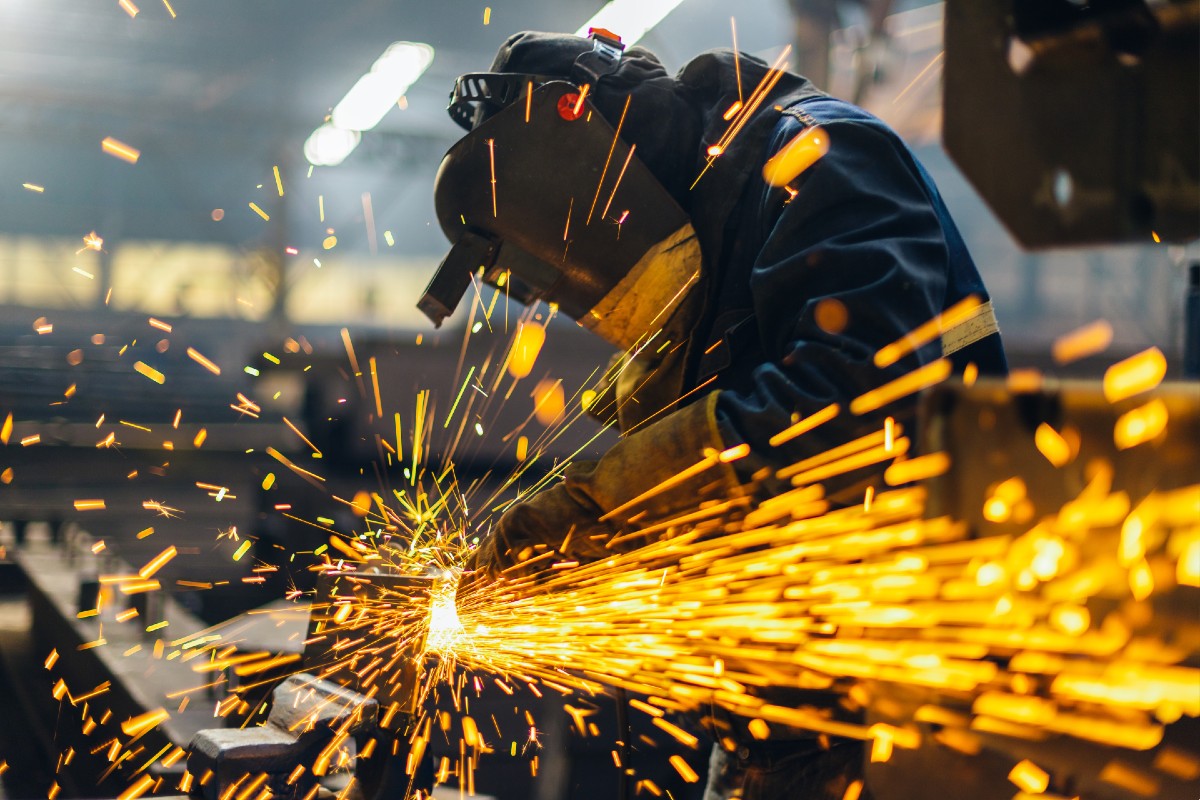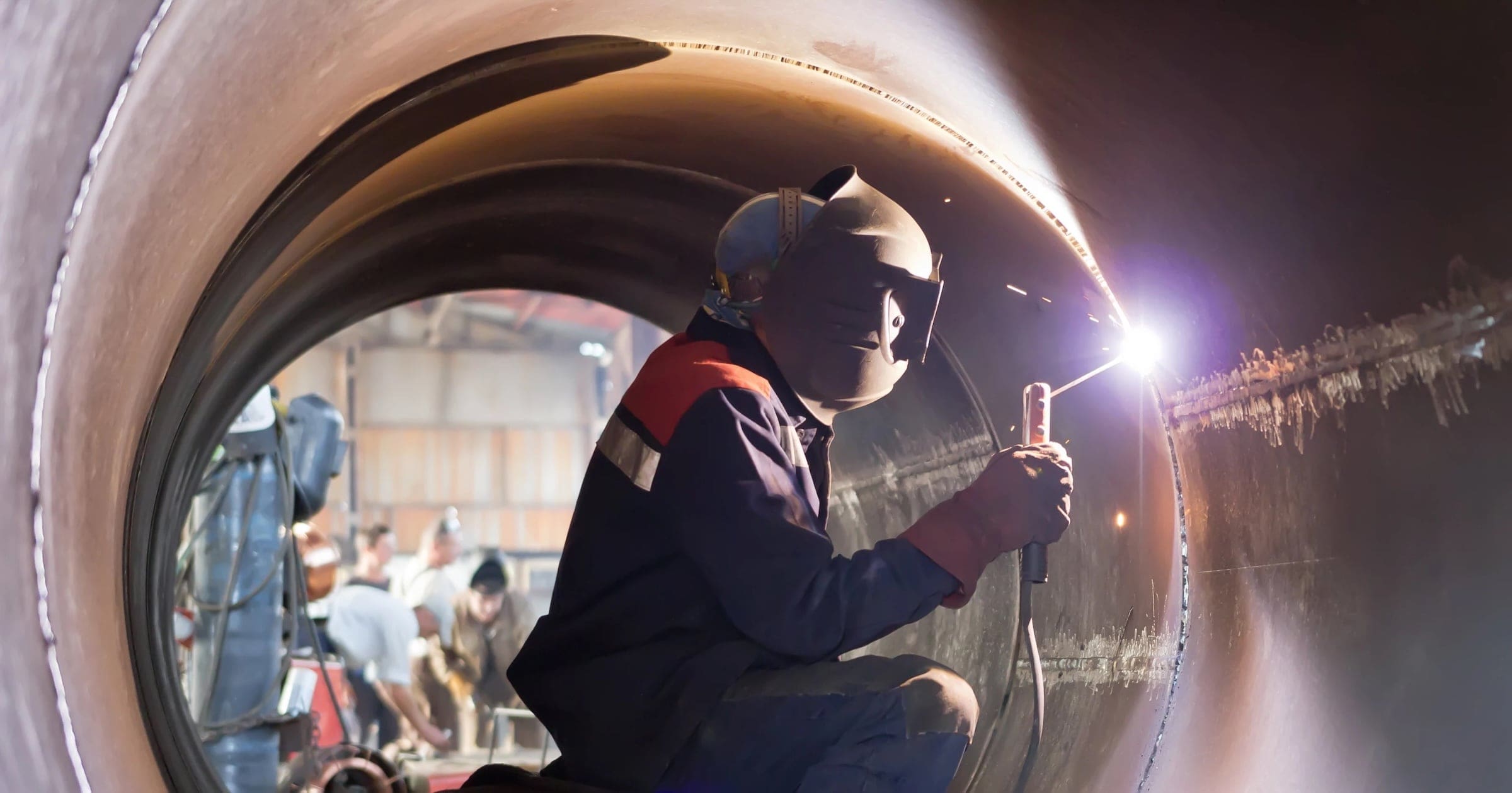Everything about Welding: Secret Insights Into Techniques and Ideal Practices for Success
Welding incorporates a variety of methods, each suited for certain materials and applications. Comprehending these methods, such as GMAW, SMAW, and TIG, is vital for accomplishing perfect results. The ideal equipment and security methods can not be overlooked. As preparation and repairing play critical duties in the welding procedure, grasping these components can greatly improve the top quality of the end product. What are the vital variables that ensure an effective weld?
Recognizing Different Welding Strategies
Welding techniques encompass a selection of methods, each suited to specific applications and products. Among the most typical methods are Gas Steel Arc Welding (GMAW), Protected Metal Arc Welding (SMAW), and Tungsten Inert Gas Welding (TIG) GMAW, also referred to as MIG welding, is preferred for its rate and flexibility, making it perfect for slim products. SMAW, or stick welding, is preferred for its simpleness and performance in outside atmospheres, especially with thicker metals. TIG welding provides accuracy and control, making it ideal for intricate job and non-ferrous steels (Fabrication). Each strategy has its one-of-a-kind advantages and considerations, permitting welders to pick the ideal approach based upon the task's needs, material kind, and wanted end results. Recognizing these strategies is crucial for effective welding
Vital Welding Devices and Tools
While different welding methods need details abilities, the best devices and devices are just as crucial for accomplishing quality results. Crucial welding tools includes welding machines, which differ relying on the strategy-- such as MIG, TIG, or stick welding. Safety gear, including aprons, safety helmets, and handwear covers, assurances safety and comfort throughout the procedure. Additionally, fixtures and clamps assist protect materials in area, making certain accuracy in welds. Consumables like welding poles, wire, and securing gas are likewise important components that affect the high quality of the weld. Furthermore, devices such as cutters and mills facilitate surface area preparation and post-weld ending up, contributing to an expert end result. Buying top quality tools ultimately improves the effectiveness and performance of welding tasks.
Security Practices in Welding
Appropriate safety and security methods are necessary in the welding sector to protect workers from possible hazards. Welders must wear ideal personal safety devices (PPE), including safety helmets with proper shading, handwear covers, and flame-resistant clothes. Adequate air flow is important to minimize exposure to hazardous fumes and gases produced during the welding process. Furthermore, workers should be educated in the correct handling of welding equipment to stop mishaps. Fire security steps, such as keeping combustible products far from the welding area and having fire extinguishers conveniently offered, are needed. Regular examinations of tools and offices can assist determine prospective threats prior to they cause mishaps. By sticking to these safety and security methods, welders can produce a more secure working atmosphere and minimize threats connected with their trade.
Preparing Materials for Welding
Preparing materials for welding is an important action that considerably influences the top quality and stability of the end product (Welding). Appropriate prep work involves cleansing the surfaces to remove contaminants such as oil, dirt, and corrosion, which can compromise the weld. Methods such as grinding, sanding, or making use of solvents are generally utilized to attain a clean surface area. Additionally, guaranteeing that the products mesh comfortably is vital; voids can cause weak welds. It's also important to consider the placement and positioning of the elements, as this will certainly influence the ease of welding and the final result. Ultimately, picking the ideal filler material and ensuring compatibility with the base steels is crucial for achieving solid, resilient welds
Tips for Getting High-Quality Welds
Achieving premium welds requires focus to detail and adherence to finest practices throughout the welding process. Correct joint prep work is important, ensuring surfaces are complimentary and clean from contaminants. Selecting the suitable filler material and welding strategy based on the base metals is important for ideal bonding. Maintaining constant traveling speed and angle while welding can promote and stop issues harmony. Furthermore, managing heat input is important; extreme warmth can bring about bending and weakened joints. Routinely evaluating the welds throughout the procedure enables for prompt modifications if essential. Finally, utilizing proper post-weld treatments, such as cleaning and anxiety alleviation, can improve the resilience and stability of the weld, eventually making sure an effective outcome.
Repairing Common Welding Issues
Welding often offers challenges that can impact the quality and stability of the last product. Common problems such as porosity, irregular weld grains, and getting too hot can occur, each needing details troubleshooting techniques. Understanding these issues is important for welders to boost their abilities and attain optimal outcomes.
Porosity Troubles Clarified
Porosity can commonly be forgotten, it remains a critical problem in welding that can endanger the honesty of an ended up item. Porosity refers to the presence of tiny gas pockets within the weld grain, which can lead and compromise the joint to early failure. This trouble normally develops from pollutants, wetness, or inappropriate protecting gas protection during the welding procedure. To minimize porosity, welders need to confirm that the base products are dry and tidy, use proper securing gases, and maintain constant welding parameters. Routinely evaluating the tools and setting can likewise aid identify prospective issues prior to they materialize in the weld. Dealing with porosity effectively is important for accomplishing strong, resilient welds that fulfill quality standards.

Inconsistent Weld Beads
Irregular weld grains can greatly impact the quality and toughness of an ended up product. Numerous aspects add to this problem, consisting of incorrect travel speed, inaccurate amperage settings, and irregular electrode angles. When the welder moves also promptly, a grain might appear narrow and lack infiltration, while relocating also gradually can create extreme build-up. In addition, using the wrong amperage can lead to either damaging or extreme spatter, both of which concession weld integrity. The welder's technique, such as inconsistent torch movement, can also lead to irregular grain appearance. To minimize these troubles, welders must concentrate on keeping constant, controlled movements and guaranteeing proper equipment setups to attain harmony in their welds. Consistency is key to attaining strong and reliable welds.
Getting Too Hot and Bending Issues
Excessive heat throughout the welding procedure can result in substantial overheating and contorting issues, impacting the structural integrity of the work surface. These troubles usually show up as distortion, which can compromise alignment and fit-up, making more assembly challenging. Factors contributing to overheating include the choice of welding specifications, such as voltage and take a trip rate, as well as the sort of material being bonded. To mitigate these concerns, welders must keep consistent traveling rate and suitable heat input while monitoring the work surface temperature level. Furthermore, preheating or post-weld warmth therapy can assist relieve tensions brought on by quick air conditioning - Fabrication. Regular evaluation and adherence to finest methods are necessary in preventing getting too hot and making sure the longevity and integrity of welded frameworks
Regularly Asked Inquiries
What Are the Profession Opportunities in the Welding Sector?
The welding industry uses diverse profession opportunities, consisting of positions as welders, teachers, designers, and inspectors. Experts can work in manufacturing, construction, aerospace, and automotive industries, benefiting from strong need and affordable incomes in numerous functions.
Just How Can I Enhance My Welding Rate Without Compromising Top Quality?
To boost welding rate without giving up high quality, one should practice efficient strategies, keep equipment, optimize settings, and boost hand-eye coordination. Regular training and looking for feedback can likewise significantly add to accomplishing much faster, top quality welds.
What Qualifications Are Readily Available for Welders?
Numerous accreditations exist for welders, consisting of those from the American Welding Culture (AWS), the National Center for Construction Education and Research Study (NCCER), and numerous industry-specific organizations. These credentials boost employability and demonstrate skill proficiency.
Exactly How Does Welding Impact the Residences of Metals?
Welding influences the buildings of metals by changing their microstructure, which can cause changes in hardness, ductility, and strength. Warm input and cooling rates during the procedure greatly affect these product attributes.
Can I Weld Dissimilar Metals With Each Other?
